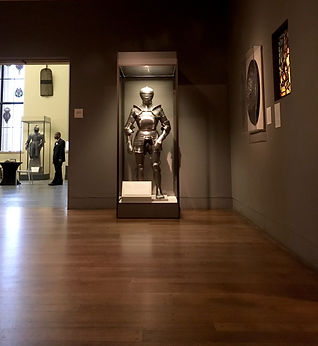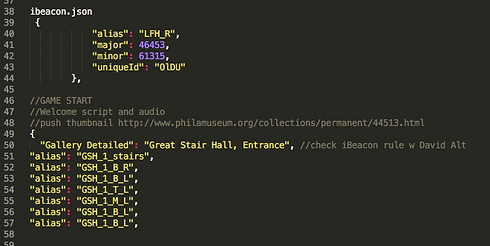
iPhone Wayfinding App
"Arti" is a mobile application that enhances museum vistitors' experience by streaming stories and music activated by iBeacon signals as they explore a world-class art museum.
THE CHALLENGE
"Arti" is a mobile application designed to enhance the museum experience by streaming stories and music activated by i-Beacon signals as users explore a world-class art museum. This technology enables the app to automatically recognize the user's location within the museum, providing contextually relevant content as they move through different exhibits. Additionally, visitors can personalize their journey by recording Voice Memos, allowing them to capture thoughts and reflections during their visit. This integration of
i-Beacon technology offers a seamless and immersive experience, enriching the visitor's engagement with the art and the museum environment
The museum has 200 i-Beacons and 240,000 objects installed throughout two floors, four wings, and 14 galleries (over 250K sq. ft. of space). Galleries are organized by geographic regions, styles, and represent 2,000 years of art and culture.
DEVELOPMENT TIMELINE
6 weeks
THE TEAM
iOS Developer
Digital Music Composer
Neural Network Engineer
MY ROLE
Art Direction | Audio/Visual Production
In my role as Art Director and Audio/Visual Producer for the "Arti" project, I developed content inspired by various time periods, artworks, and global locations. I created color palettes that encapsulated the essence and mood of specific art historical periods and styles, laying the groundwork for engaging 'art stories.' These narratives, complemented by original music scores composed by Alex Cole, enriched the immersive experience for museum visitors.
Drawing inspiration from Piet Mondrian's abstract paintings, I designed icons that embody his minimalist aesthetic. Mondrian's art is characterized by the use of basic elements—color and line—set against ample white space, creating a harmonious and balanced composition. This approach translates effectively into user experience design, where simplicity and clarity are paramount. By adopting Mondrian's principles, I ensured that the app's interface is intuitive and visually appealing.
Leveraging my expertise in museum programs and foundational JavaScript, I identified a gap in the ToolKit library regarding location identifiers for iBeacons. Collaborating with engineers Kotaro and Deep, I sourced a location.json file that addressed this issue, thereby enhancing the app's functionality. This proactive approach underscores my commitment to delivering a seamless and effective user experience.
My holistic involvement in the "Arti" project—from conceptualization and design to technical problem-solving—has significantly contributed to creating an accessible and engaging platform for museum visitors.

How It Works
Original pre-recorded music and audio
Creating an engaging audio-visual experience for museum visitors involves thoughtful integration of music, storytelling, and interactive features. Here's how these elements can be effectively combined:
1. Thematic Music Scores
Crafting music that reflects the mood and era of specific artworks or time periods can significantly enhance the visitor's emotional connection to the art. For instance, composing original scores that align with the ambiance of different galleries can immerse visitors in the historical context of the exhibits. This approach is akin to the opening music of a feature film, setting the tone and piquing interest. As noted by MuseumNext, creative audio guides that use storytelling and music provide a unique and engaging narrative for listeners.
2. Art Storytelling
Developing narratives that are both informative and entertaining can captivate visitors and encourage deeper engagement with the art. These stories should be fun and quirky, rather than didactic, to spark curiosity and foster a personal connection with the artwork. According to Audio-Cult, content that tells stories appealing to visitors emotionally is more memorable than abstract facts.
3. Voice Memo Feature
Incorporating a Voice Memo feature allows visitors to record personalized messages, capturing their thoughts and reflections during their visit. This interactive element not only personalizes the experience but also encourages visitors to engage more deeply with the art, fostering a sense of ownership and connection.
By thoughtfully combining these elements, museums can create a rich, immersive experience that resonates with visitors, enhancing their appreciation and understanding of art.
Music
Art Stories
Voice Memo
How It Works
i-Beam Signals, API, and pre-recorded audio
The museum's proprietary API was used to map or key specific works of art from the Collections Database to real works of art inside the gallery branches and their corresponding i-beacon signals.
The app "listens" for the nearby i-beacon signals as the visitors walk around.
The audio volume increases as she gets closer to the gallery entrance. The music score will fade when a visitor is out of range. A new audio file will stream as she walks closer to a work of art. To record a personalized audio file, she clicks on Voice Memo.








